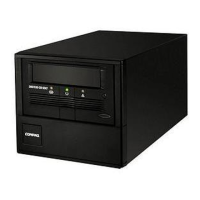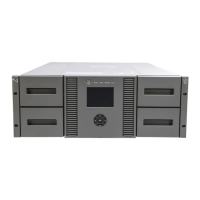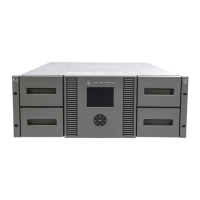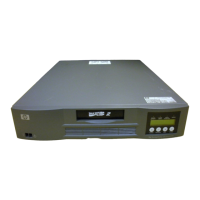Table 3 MPX200 supported configuration maximums
Per chassis (2 blades
1
)
Per bladePer portConfiguration parameter
2,0481,024256iSCSI connections, 1-GbE model
4,0962,048
2,048
2
iSCSI connections, 10-GbE model
300300N/AInitiators, 1-GbE model
600600N/AInitiators, 10-GbE model
4,0964,096N/ALUNs, 1-GbE model
4,0964,096N/ALUNs, 10-GbE model
Up to 4 EVAs
3
Up to 4 EVAs
3
N/ATargets
1
For mixed-blade chassis configurations that include one 1-GbE blade and one 10-GbE blade, the supported
maximums are the 1-GbE values.
2
10-GbE ports only
3
For iSCSI connectivity
Total number of initiators
You can configure the MPX200 with a single blade or with two (redundant) blades. When using two
blades, the initiator is registered in both blades for consistency, whether or not you intend to access
both blades.
Number of paths required per initiator
After establishing the number of initiators, determine how many paths are required by each. The
number of connections per blade is finite, and every initiator login constitutes a connection to the
MPX200. In a multipath environment, HP recommends a minimum of one connection per blade;
high-performance applications may require up to four connections per blade (a total of eight).
Use of iSNS
The MPX200 presents one iSCSI target for each virtual port group (VPG) (a total of four). Each initiator,
therefore, discovers four times the number of FC targets. HP recommends that you use iSNS to present
to the initiator only the required iSCSI targets.
Use of iSCSI ports
When configuring the MPX200 for iSCSI, there are four available iSCSI ports per blade. For high
performance and maximum initiator connectivity, HP recommends that you use all available ports.
Balancing the load
HP recommends that you use all iSCSI ports for both 1-GbE and 10-GbE blades. If multiple 1-GbE
initiators are required, ensure that logins are spread across all 1-GbE ports. For 10-GbE blades, you
can place a higher number of initiators on the 10-GbE ports than on the 1-GbE ports.
MPX200 Multifunction Router overview28
